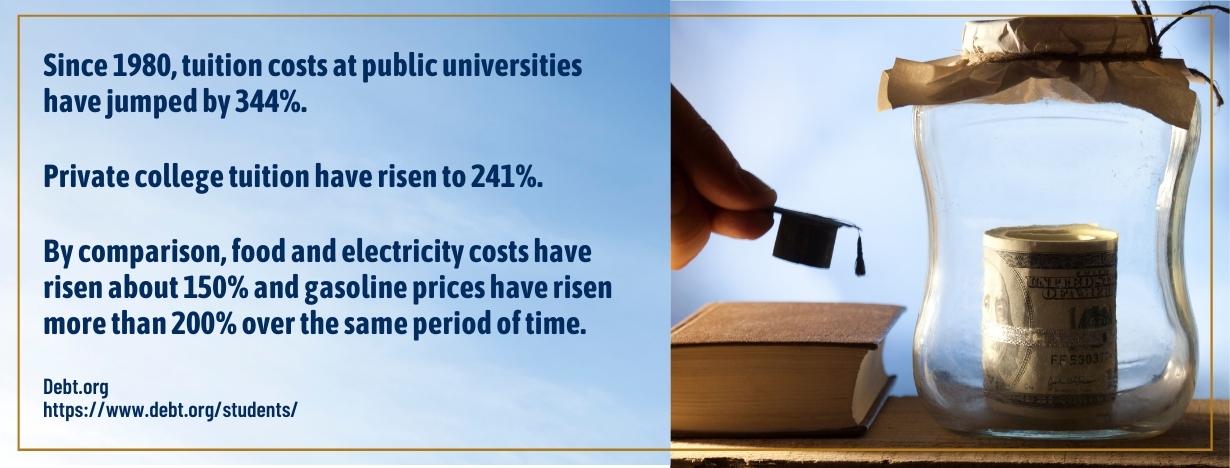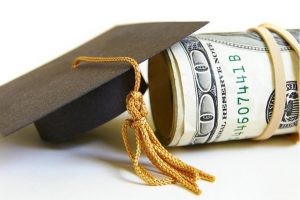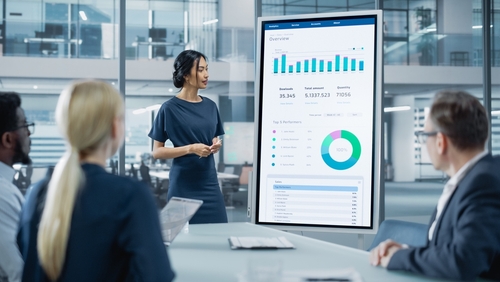What Happens To Your Student Loans When You Drop Out of College?
Every student enters college in the hopes that they will have a successful future. However, not everyone can afford it! In fact, students are reluctant to enroll in college due to a variety of reasons, but financial hardship tops the list. This is where financial aid can assist aspirant students in paying for a higher education institution.
The most common financial aid is student loans. Taking out a student loan takes careful consideration and planning, just like other financial decisions. You have to think about loan applications, loan terms, monthly payments, interest rates, and other factors.
The easiest part is meeting the requirements and getting a student loan. The challenging part is repaying the student debt and making satisfactory academic progress.
Most students borrow money to fund a college career as an investment. Given that interest accrues over time for student loans, it is ideal to complete the program and earn the degree.

Unfortunately, not everyone has the privilege to graduate from college. There are other factors that determine one’s academic success. The dropout rate for undergraduate students and those who do not finish their college degree program is 32.9%. Financial hardship and troubles are to blame for more than half of this rate.
The same level of thought that goes into determining whether to enroll in college and apply for a student loan also goes into deciding whether or not to leave college for whatever reason.
Student loan borrowers must significantly consider how they will repay a student loan that they were unable to utilize entirely.
While we focus on what really happens to your student loans when you decide to drop out of college, this article also provides information on how to apply for financial aid, the types of student loans, repayment plans, and tips for handling and paying off student loan debt.
How to Qualify for Financial Aid
It exists in a variety of forms and comes from many sources. Federal student loans, which come from the government, or private funding from private student loan lenders are the two common options.
The other types of financial aid are scholarships and grants. In most instances, the latter two won’t be able to cover all college expenses.
Depending on a variety of conditions, both federal and private loans have distinct needs and qualifications. You will receive advice for all these types from the school’s financial aid office. Most federal student loans are typically the first choice for most students.
To determine eligibility for federal aid, federal student loan borrowers should submit the Free Application for Federal Student Aid (FAFSA) form. Direct subsidized and unsubsidized federal student loans do not require a credit check to be approved.
Federal financial aid eligibility does not require that you complete all of the needed course credits, but you must be enrolled in at least half of them.
Another main prerequisite to continue receiving financial aid is making satisfactory academic progress. Failure to meet these conditions would mean forfeiture of the benefits of financial aid.
However, a solid credit report or a cosigner is often required in order to qualify for private student loans. In the case of scholarships and grants, each one has its own requirements that must be met.
Visit your school’s financial aid office or talk to a licensed financial professional to find out the best financial aid or loan options for you as well as your repayment options.
Types of Student Loans
These two are the types of student loans:
- Federal Student Loans, and
- Private Student Loans
In federal student loans, the federal borrower benefits, as well as the terms and conditions, are all stipulated by law, including the interest rate.
In contrast, private student loans are offered by private institutions such as lending companies, banks, state agencies, credit unions, and other financial institutions.
These private institutions choose the terms, conditions, and interest rates, subject, of course, to any applicable laws and regulations. The loan terms and other information of your student loan should always be confirmed with your loan servicer.
Federal Student Loans
The subcategories of federal student loans for college students are direct subsidized and direct unsubsidized loans. Direct PLUS Loans are the other federal loans that are available to graduate and professional students as well as to parents.
The period from which interest begins to accrue is the primary distinction between direct subsidized loans and direct unsubsidized loans.
While you are still enrolled in school, interest begins to accrue on direct unsubsidized loans, whereas it is waived for students who take out direct subsidized loans. It is the government that pays the interest for the student while he or she is in school.
Student loans from the federal government have fixed interest rates all throughout their period and are lower than the interest rate for private student loans.
Direct loans such as the ones mentioned accrue interest daily. To compute the daily interest, the loan balance is multiplied by the number of days from the last payment and then multiplied by the interest rate factor.
The interest rate factor is the fixed interest rate divided by the number of days in the year.
In terms of taxes, most federal student loans’ interest might be deductible.
Private Student Loans
Interest rates for private loans greatly vary depending on one’s circumstances. The interest rate can either be variable or fixed and higher or lower than that of federal loans. However, private student loan lenders do not subsidize student loans and have fewer repayment options.
You might need to make regular monthly payments while your study is still in progress if you have received a student loan from a private lender. Stipulations on deferred monthly payments may be allowed by some private lenders subject to certain conditions.
Students tend to obtain private student loans after exhausting all federal loans, scholarships, and government grants to cover the cost of a college degree. Similar to federal student loans, interest may be deductible for tax purposes.
To make the best decision, you can research and compare different loan offers from various private lenders to determine which plans you qualify for, which ones have lower interest rates, and which ones would be able to meet your needs.
What Leaving College Would Mean for Your Student Loans
There are more consequences to dropping out of school than just not getting a college degree. You may be out of college, but your student loan debt stays. They are not canceled, nor can they be readily excused for any given reason.
Half-time enrollment or taking fewer than half of the anticipated full-time credits in a term would also bear the same consequences as dropping out or leaving school.
Here is what happens to student loans when you drop out of college and your corresponding repayment options.
What Happens to Federal Student Loans
Dropping out of school or being withdrawn from school due to a status below half-time will automatically make a federal student’s loan under repayment status.
In the case of Pell Grants, the school decides how much of the grant you’ll have to pay back if you decide to drop out. The money must then be repaid within a specific amount of days, or you can choose to enter a repayment agreement based on your ability to pay.
Depending on the type of student loan you took out, there may be a grace period. Direct subsidized and unsubsidized loans both have a grace period of six months.
This indicates that withdrawn or dropped federal students won’t be required to make a payment during the six-month grace period. This allows them to look for funds for the payment of their student loans.
When the grace period ends, a federal student will begin receiving a student loan bill which he or she must diligently pay. The payment terms will also vary depending on which of the different repayment plans is best for your circumstances.
Several student loan repayment options are provided for by federal law, including:
Standard Repayment Plan
After the six-month grace period, the standard repayment plan is the default option for making student loan payments. The monthly payment, inclusive of interest, is fixed and spread out over ten years under this repayment plan.
A decade sounds like a long time, but it is considered one of the quickest timelines for federal student loan payments. In comparison to other repayment plans with a longer period, this means that the overall interest is lower. However, this would mean that the monthly payments would also be higher.
This option applies to federal loans only and not to private student loans.
Graduated Repayment Plan
This is similar to the standard repayment plan, which ensures repayment of student loans within ten years. The only distinction is instead of being fixed each month, the monthly payment grows over time. This repayment strategy is predicated on the idea that a person’s monthly income would rise over time.
Income-Driven Repayment Plan
As its name would suggest, the income of a federal student is used as the basis for the monthly payment under an income-driven repayment plan. This occasionally leads to an extension of the loan’s duration.
Given this, choosing an income-driven repayment plan is the best option if you don’t believe you will be able to make your monthly payments for a considerable amount of time.
In this case, you won’t have to worry about any missed payment as your responsibility would be proportional to your earning capacity making this plan more sustainable.
There are several types of income-driven repayment plans, such as:
- income-based repayment,
- income-contingent repayment,
- income-sensitive repayment,
- pay as you earn, and
- revised pay as you earn
These IDR plans allow student loan payments starting at 10% to 25% of your salary. You can use student loan calculators to see how much you will have to pay every month for your student loans.
Most of these also provide for student loan forgiveness after 20 to 25 years if you still haven’t paid your student loans in full by then.
To prevent losing your IDR plan, you must provide an update on your income and family size annually by the deadline. Private loan borrowers do not qualify for the program as it is only available to federal students who have taken out any sort of federal student loan.
Forbearance and Deferment
You could delay making your monthly student loan payments through forbearance or deferral without worrying about being delinquent or declared in default.
In forbearance, payments can either be suspended or reduced for up to 12 months at a time. Regardless of your type of student loan, interest will accrue. Your application will be automatically accepted under certain situations. In this case, the loan servicer does not exercise discretion.
However, circumstances such as financial difficulties, major medical expenses, and changes in employment would require review by your loan servicer.
On the other hand, deferment of student loans only suspends payment, and only unsubsidized loans would continue to accrue interest. For students with subsidized student loans, deferment is the best choice because interest does not accumulate.
Everyone may not be eligible for federal deferment. Consult with your student loan servicer to determine your eligibility for this program.
Public Service Loan Forgiveness
For federal students who want to work full-time in government, public service loan forgiveness is a blessing. The student loan forgiveness program was established to encourage students to do public service or work for the government – federal, state, or local as well as nonprofit organizations.
Under the PSLF repayment option, you just need to make 120 monthly payments toward your student loans to qualify for student loan forgiveness. It would take about ten years to complete the number of payments required.
The payment would only count toward the required 120 if, at the time of the payment, you are working for eligible employers regardless of your position or job title.
Following completion of the payment, a portion of the loan is forgiven tax-free as the remaining amount is not viewed as income by the Internal Revenue Service. This plan is for those who intend to pursue a career in government even if they haven’t completed a degree.
Compared to those who are under a standard repayment plan, the PSLF is most advantageous if you are under an IDR plan.
Direct Consolidation
Loan consolidation is considered the best option for students with multiple federal student loans. Under a direct consolidation loan, what happens to student loans is that they will be combined into one or single loan at a fixed interest rate. The basis for this interest rate would be the average of all your student loans’ interest.
The U.S. Department of Education presents this option with no additional cost or fee on the part of the federal student. It makes paying all your student loans convenient and organized.
What Happens to Private Student Loans

When it comes to student loan payments, private lenders do not extend the same leniency to their qualified borrowers as a federal student would receive from the federal government.
Although private financial institutions have varying student loan policies and regulations, they often do not adhere to a grace period for qualified borrowers, unlike in federal loans.
If they do, it normally lasts less than six months, and the interest continues to accrue during that time.
Unlike federal loans, repayment options for private student loans are limited and are often constrained by the terms and policies of the institution from which you obtained your student loan.
More often than not, what happens to student loans from a private lender when you drop out of college or when your enrollment status falls below half-time is that monthly payments must immediately be made.
Refinancing
Refinancing student loans is also an option. When you refinance your existing student loans, including federal student loans with a private lender, all of them will be merged into a single new loan. This makes it possible to have a lower monthly payment required over a longer repayment term.
Refinancing is a great option for federal students who have a mix of other student and personal loans and are earning a stable and good monthly income.
However, federal students should carefully consider before they refinance federal loans because refinancing would result in the loss of all federal loan benefits, including forbearance or deferment and PSLF.
You can always talk to your lender to know all available programs and repayment alternatives for your loans when you drop out of school.
Forbearance and Deferment
Private student loans can also be subject to forbearance and deferment. But just like other private repayment options, it is entirely up to the private financial institution that provides your student loan.
Interest accrues regardless of the type of student loan you obtained. The private lender always exercises discretion, and if granted, the period of forbearance or deferment is usually just around one to three months.
Not Paying is Not an Option!
There are many repercussions if you fall behind on your monthly payments. Being delinquent on your loans when you drop out of school will not only cost you additional fees and fines but also negatively impact your credit scores.
This means obtaining future credit approval or simply opening a bank account would be challenging. Worse yet, your tax refunds can be withheld, and garnishment of wages may happen if all of your principal obligations and accrued interests become demandable at once. You may even be sued in court by your private lender.
Never let yourself default for more than two months in paying your student loans to avoid these consequences!
What You Can Do to Manage Your Student Loan Payments
Consider half-time enrollment before dropping out.
Before making the final decision to leave school, you might want to consider half-time enrollment. You can continue your studies and look for money for your student loans while preventing your monthly loan payments from becoming due all at once.
Visit the financial aid office of your school or talk to an expert.
A certified financial planner can provide you with sound financial advice about your student loans, such as choosing a repayment option, weighing the pros and cons, and assessing your ability to pay. You can also ask about tuition reimbursement or a refund.
Make the most out of the grace period.
The grace period is your time to find funding to repay your student loans. Maximize this time so that when it ends, you will be prepared to begin making monthly payments.
Use a loan simulator.
A loan simulator will help you compare the available repayment options and decide which one would best suit your financial situation and circumstances. In this way, you are fully informed about every aspect of the terms of your repayment plan and may prepare accordingly.
Pay all your unpaid interest.
Interest capitalization happens when unpaid interest is added to the main balance of your student loan. This implies that if your outstanding principal grows, so does the interest calculated using it. If you permit this, you will wind up paying only interest first and not any of the principal amount owed.
Additional Resources:



